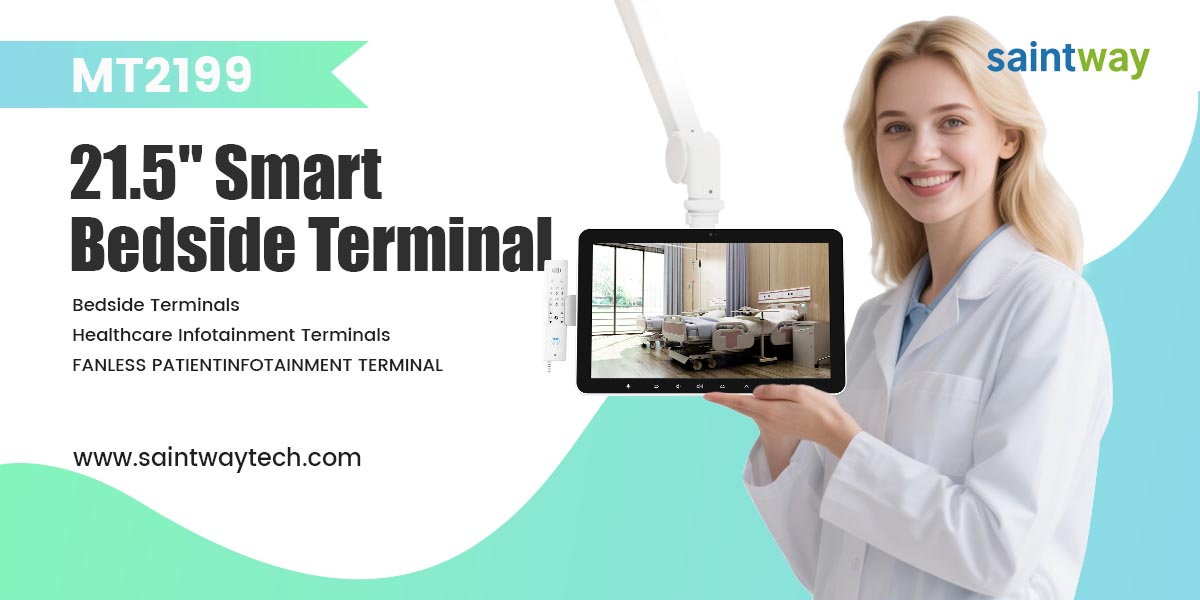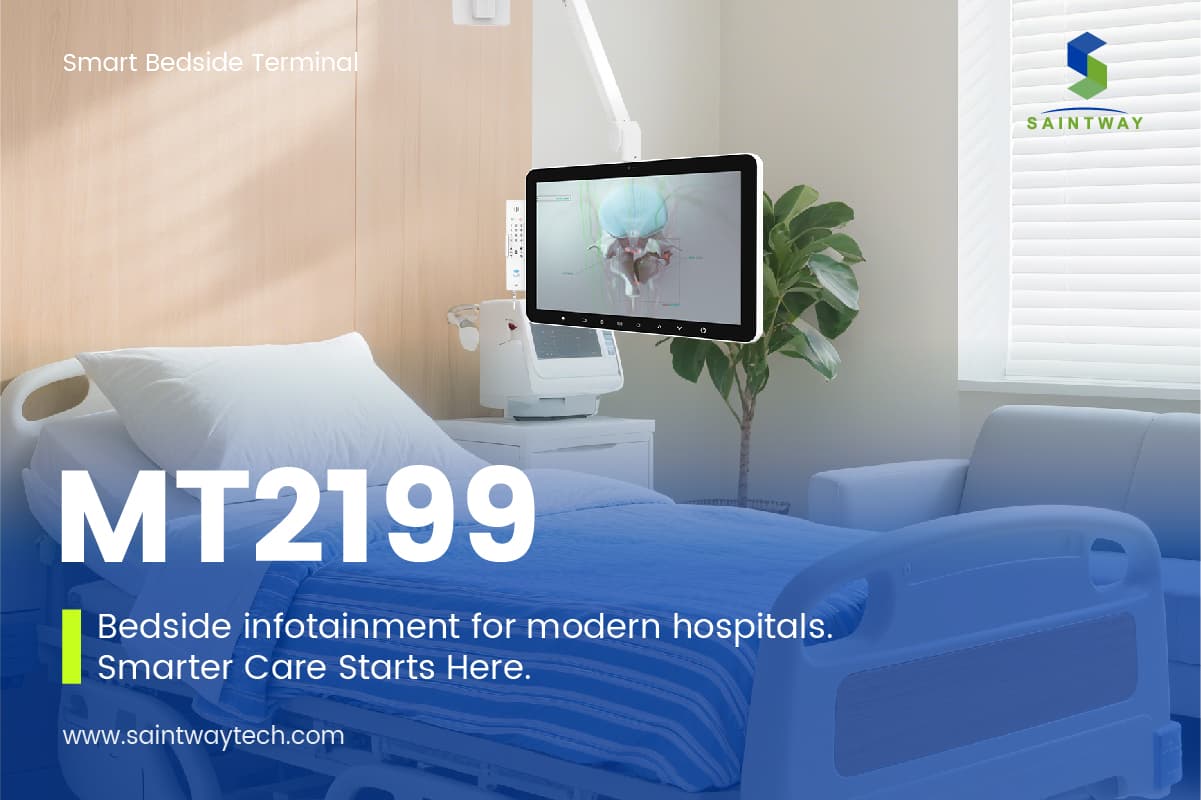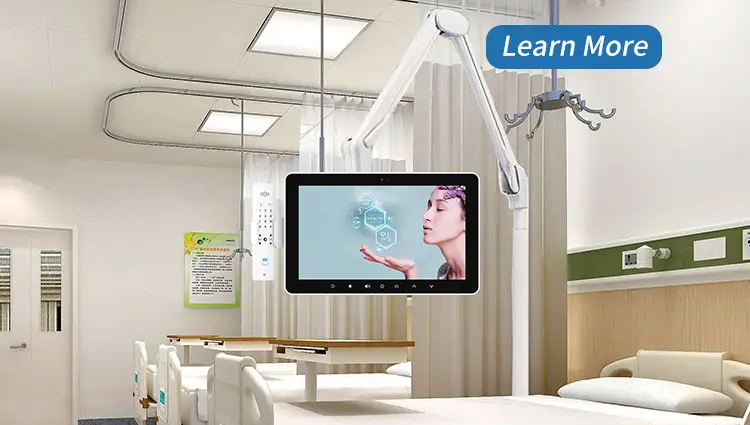- 1. What Are Bedside Infotainment Terminals and How Do They Work?
- 2. Key Benefits of Bedside Infotainment Terminals for Modern Hospitals
- 3. How Bedside Infotainment Terminals Improve Patient Satisfaction Scores
- 4. Must-Have Features for High-Performance Bedside Infotainment Terminals
- 5. Integrating Bedside Infotainment Terminals with Hospital Information Systems (HIS)
- 6. The Role of Bedside Infotainment Terminals in Streamlining Clinical Workflows
- 7. Challenges Integrators Face When Deploying Bedside Infotainment Terminals—And How to Solve Them
- 8. Future Trends in Bedside Infotainment Terminals for Smart Healthcare
- 9. Why Software Providers Should Prioritize UX in Bedside Infotainment Terminals
- 10. Cost vs. Value: Making the Business Case for Bedside Infotainment Terminals in Hospital Projects
When I walk into a modern hospital today, I don’t just see beds, monitors, and white coats—I see a growing demand for smarter, more connected care experiences. At the center of that evolution? Bedside infotainment terminals.
These all-in-one devices are transforming the way patients engage with their environment and how staff deliver care. From offering real-time access to electronic medical records (EMR) and video consultations to simplifying nurse workflows and enhancing patient comfort with entertainment, bedside infotainment terminals are quickly becoming essential in smart ward integration.

But for software companies and integrators, it’s not just about putting a screen at the bedside. It’s about ensuring seamless HIS integration, choosing user-friendly designs, overcoming deployment hurdles, and staying ahead of trends like AI and remote monitoring.
In this post, I’ll break down why these terminals are reshaping healthcare, what features to look for, how to tackle the biggest integration challenges—and why investing in the right bedside terminal could be the smartest move for any healthcare tech provider today.
1. What Are Bedside Infotainment Terminals and How Do They Work?
A bedside infotainment terminal is more than just a screen—it’s a multifunctional digital hub mounted at the patient’s bedside that offers access to entertainment, health information, clinical tools, and communication systems. Think of it as a personalized interface that connects patients, clinicians, and hospital systems in real time.
These terminals typically feature a touchscreen display, hospital-grade materials for hygiene, and integration capabilities with the hospital’s HIS or EMR platforms. They allow patients to watch TV, browse the internet, check their treatment plans, and even request assistance—all from a single interface. For hospital staff, they streamline access to patient data, vital signs, and clinical tools without leaving the bedside.
2. Key Benefits of Bedside Infotainment Terminals for Modern Hospitals
Smart hospitals thrive on efficiency, transparency, and engagement—and bedside infotainment terminals deliver on all three fronts. They empower patients to be more informed and involved in their care journey. At the same time, clinicians save valuable time through on-screen access to records and care plans.
These terminals reduce the need for printed materials, minimize nurse call disruptions, and improve communication across departments. Most importantly, they significantly enhance the patient experience by reducing anxiety, boredom, and feelings of isolation—especially during long hospital stays.
3. How Bedside Infotainment Terminals Improve Patient Satisfaction Scores
Hospitals in many countries are under increasing pressure to improve HCAHPS scores or equivalent patient satisfaction metrics. Bedside infotainment terminals offer a direct way to elevate those numbers. When patients can easily access entertainment, understand their treatment plans, request meals, or provide real-time feedback—all from a clean, intuitive interface—they feel more in control and more satisfied with their care.
High satisfaction scores not only reflect better care but also contribute to financial incentives and improved reputation. For integrators, it’s a strategic point to emphasize when proposing or deploying these terminals.

4. Must-Have Features for High-Performance Bedside Infotainment Terminals
Not all bedside terminals are created equal. The most effective solutions share a few non-negotiable features:
- Multi-language support to cater to diverse populations
- EMR/HIS integration for seamless clinical workflows
- Touchscreen UI with responsive design
- Secure patient login and data protection
- Nurse call and service request functionality
- Entertainment packages including streaming, radio, and educational content
- Telehealth support via webcam and microphone
Integrators should evaluate these criteria not just from a tech standpoint—but from a usability and long-term scalability perspective.
5. Integrating Bedside Infotainment Terminals with Hospital Information Systems (HIS)
One of the most critical steps is ensuring that bedside terminals integrate flawlessly with existing HIS, EMR, PACS, or nurse call systems. A terminal that looks sleek but doesn’t sync with back-end systems creates more problems than it solves.
Successful integration requires coordination between terminal providers, software vendors, and IT departments. It’s not just plug-and-play—it’s planning for data flow, APIs, cybersecurity, user authentication, and interface responsiveness. For integrators, this is where technical competence and clear project scoping make all the difference.
6. The Role of Bedside Infotainment Terminals in Streamlining Clinical Workflows
Clinicians are under time pressure, and every minute counts. With bedside infotainment terminals, nurses and doctors can access patient charts, update vitals, or conduct video rounds without walking back and forth to the nursing station. Some systems also allow medication reminders, automated documentation, and real-time alerts—all from the terminal.
This cuts down on manual entry, reduces delays, and enhances communication within care teams. In the long run, it leads to better outcomes and a more efficient care delivery process.
7. Challenges Integrators Face When Deploying Bedside Infotainment Terminals—And How to Solve Them
While the value is clear, integrators often face a few common hurdles:
- Legacy infrastructure compatibility
- Network bandwidth and Wi-Fi coverage
- Security concerns around patient data
- User training and tech literacy gaps
- Maintenance and device sanitation
Each challenge requires proactive planning. For example, collaborating with hospital IT early can ensure smooth data integration. Providing tailored training for staff reduces tech friction. Choosing modular or upgradeable hardware can extend product life cycles and reduce cost over time.
8. Future Trends in Bedside Infotainment Terminals for Smart Healthcare
The evolution doesn’t stop here. The next wave of bedside infotainment terminals is bringing in features like:
- AI-powered health education and chatbots
- Voice control for accessibility
- Personalized patient interfaces based on condition or preferences
- Remote diagnostics for maintenance
- Seamless integration with wearable health devices and remote monitoring tools
Integrators who align with these trends early will position themselves as strategic partners rather than just suppliers.
9. Why Software Providers Should Prioritize UX in Bedside Infotainment Terminals
No matter how powerful the backend is, if the user experience (UX) isn’t intuitive, adoption will suffer. Patients—especially those who are elderly, ill, or in pain—don’t have the patience to learn complex systems. Interfaces must be clear, responsive, and emotionally calming.
For integrators working with software providers, this is an opportunity to deliver value: design terminals that feel as easy as a smartphone, with large icons, fast touch response, and simple navigation. This isn’t just about aesthetics—it directly impacts usage rates and ROI.
10. Cost vs. Value: Making the Business Case for Bedside Infotainment Terminals in Hospital Projects
Yes, bedside infotainment terminals are an investment. But when positioned properly, they’re an investment that pays off—financially and operationally. Hospitals see returns through:
- Improved patient satisfaction scores
- Shorter staff response times
- Reduced administrative overhead
- Higher patient engagement in treatment plans
- Fewer readmissions through better education
For integrators, the key is to frame the conversation around value, not just price. A well-integrated bedside terminal is not a device—it’s a platform for smarter, more human-centered care.

